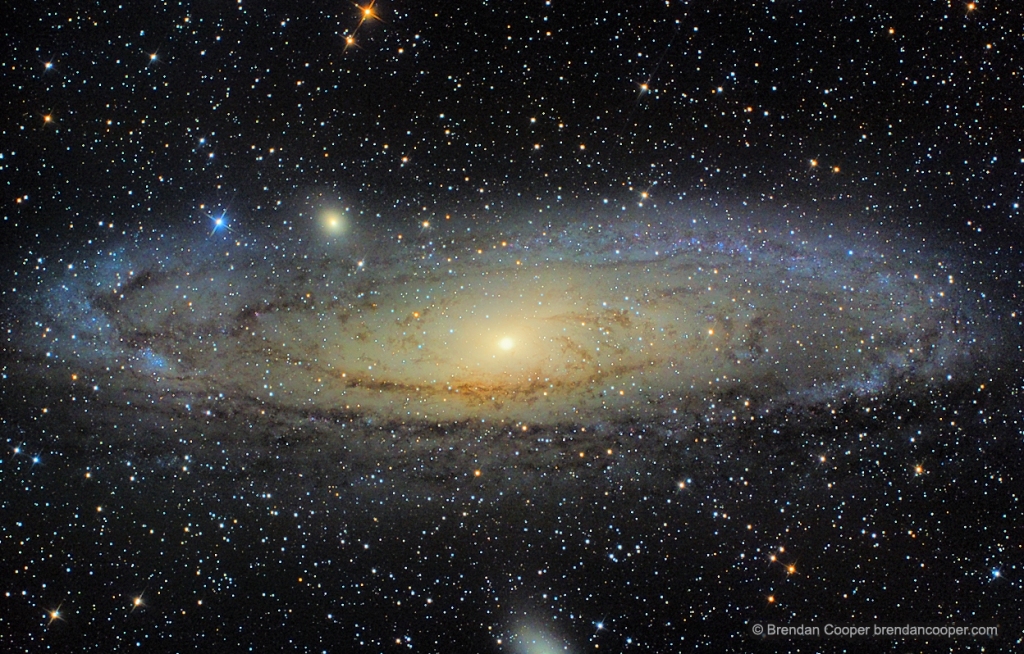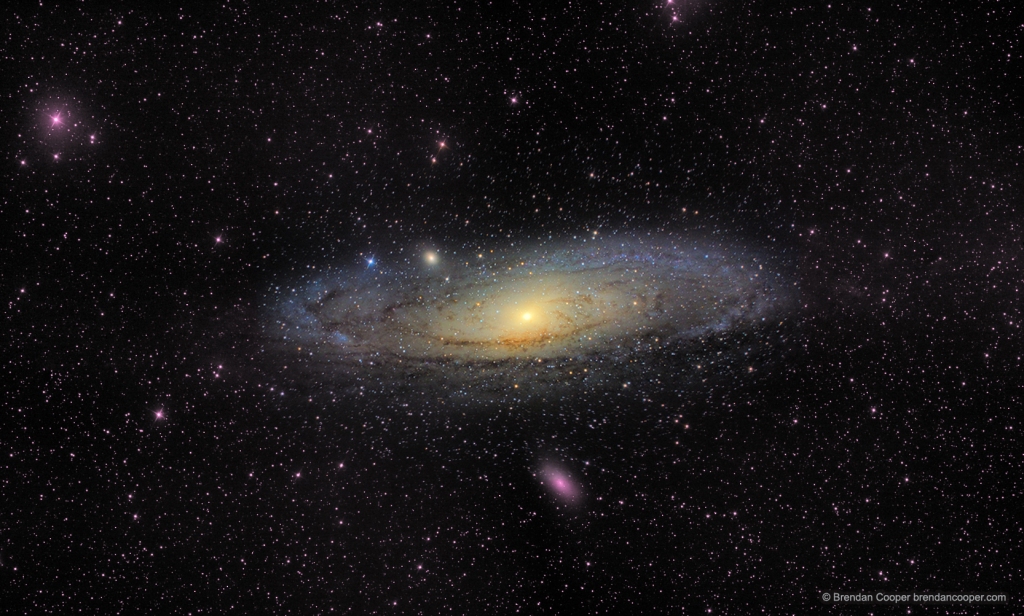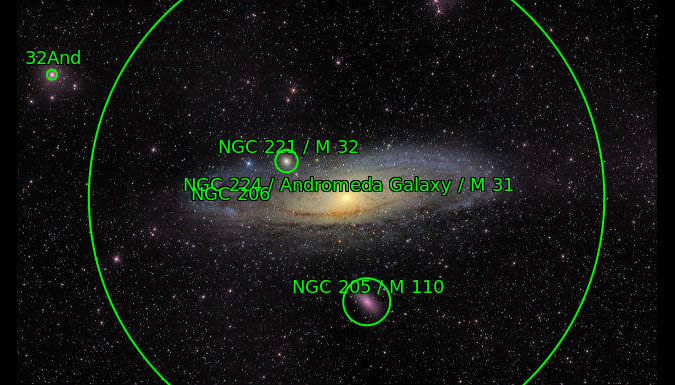It’s around September time that the M31 photos start appearing. This is because M31 – better known as the rather dramatic-sounding Andromeda Galaxy – is nice and high in the Northern Hemisphere. ‘Nice and high’ means that it’s directly above you, so there’s a lot less atmosphere to fight through. Atmosphere distorts images, so the less atmosphere, the clearer the image. If you shoot objects near the horizon, you can be imaging through the equivalent of up to four atmospheres!
Given that the weather in my bailiwick has been uniformly awful for the past two months, I spent a lot of time planning not just one, but two shoots for Andromeda. One was to gather as much information as possible about the galaxy itself; the other was to do a four-pane mosaic of the space around it, because it’s a view I hadn’t really seen done too often. Andromeda is actually huge, with the full object taking up around six moons’ worth across the sky (Phil Plait explains this well over at Bad Astronomy). This is why most shots are just of the object itself.
Fortunately the weather did actually open up around mid September, and I was able to do several nights’ worth. Given that I’ve only really been doing this ‘properly’ for a few months, I did a little dance when Andromeda started appearing on my laptop screen as the images started to come through.
So, here they are…


I didn’t know it at the time, but Andromeda actually has at least 13 satellite galaxies, the largest of which is M110, visible just below M31. I seem to have inadvertently captured another three of them, as you can see when I submit the image to the rather wonderful Astrometry.net

Top tip: on the Astrometry.net page, click the link that takes you to the image superimposed against the WorldWideTelescope – it’s amazing. In fact, Astrometry.net is amazing. It’s the basis of a lot of today’s software that does plate solving: that is, show it an image, and it’ll tell you exactly what you’re looking at. Very handy when you can’t actually see it in the sky, even when it’s six moons wide!
Nerdy stuff:
- 9.5 hours of integration
- 60 seconds exposures at ISO800
- Calibration: 25 flats, 25 dark flats, 50 darks, 50 bias
- Hardware: Sky-Watcher 130PDS scope (F5), Sky-Watcher NEQ6 mount, Canon EOS1000D astro-modded camera with Sky-Watcher 0.9x coma corrector
- Software: polar alignment with SharpCap Pro, capture with Astrophotography Tool (APT), stacking with Deep Sky Stacker (DSS), post-processing with StarTools and Photoshop CS2
- View annotated at Astrometry.net
- View superimposed against the WorldWide Telescope